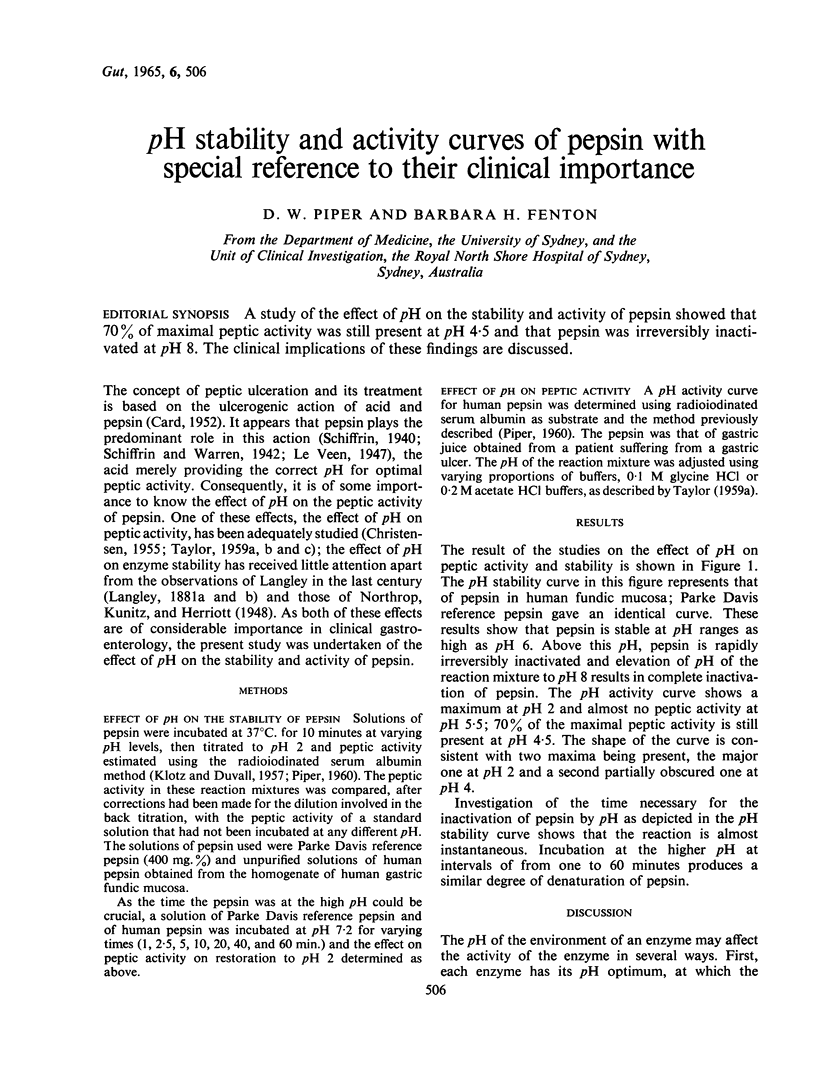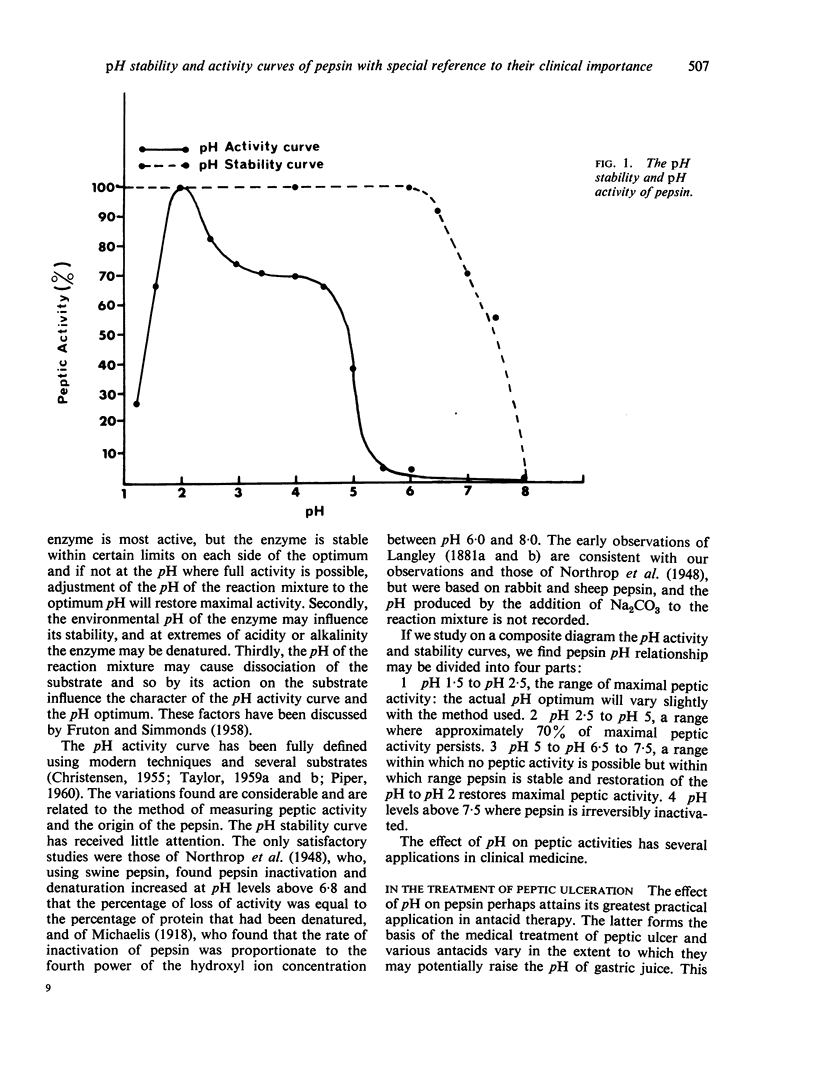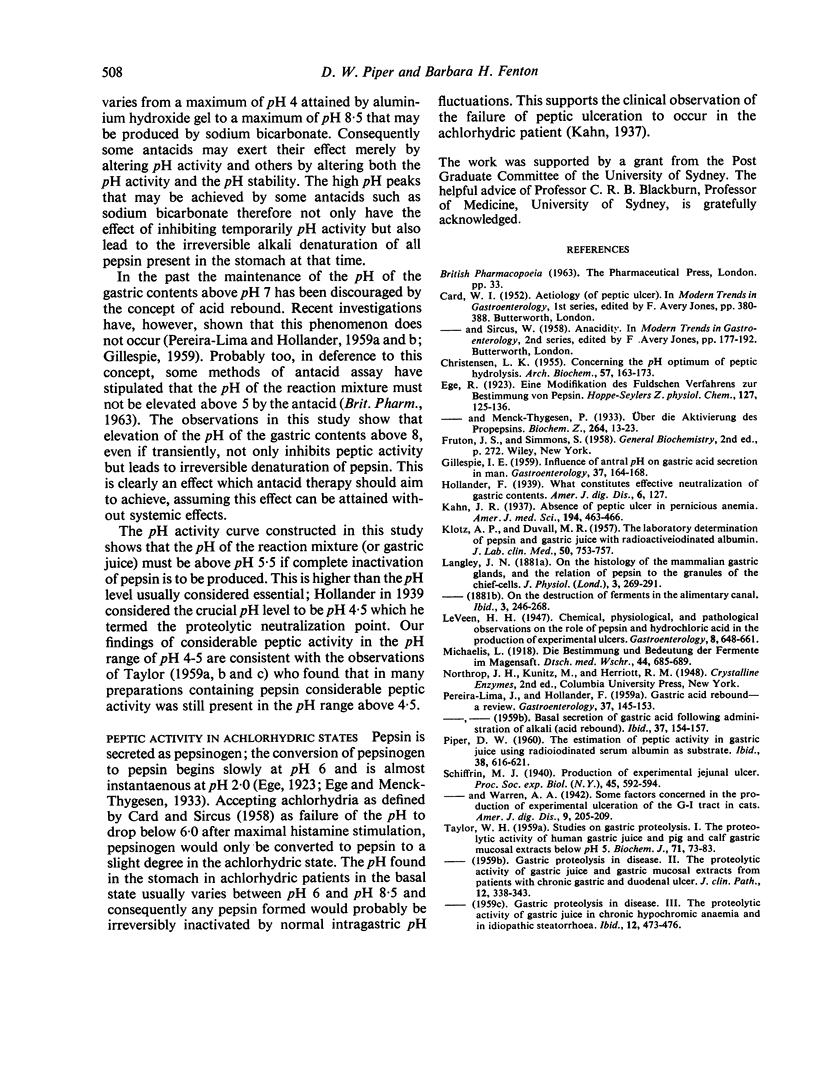Full text
PDF


Selected References
These references are in PubMed. This may not be the complete list of references from this article.
- CHRISTENSEN L. K. Concerning the pH optimum of peptic hydrolysis. Arch Biochem Biophys. 1955 Jul;57(1):163–173. doi: 10.1016/0003-9861(55)90189-2. [DOI] [PubMed] [Google Scholar]
- GILLESPIE I. E. Influence of antral pH on gastric acid secretion in man. Gastroenterology. 1959 Aug;37:164–168. [PubMed] [Google Scholar]
- KLOTZ A. P., DUVALL M. R. The laboratory determination of pepsin in gastric juice with radioactive iodinated albumin. J Lab Clin Med. 1957 Nov;50(5):753–757. [PubMed] [Google Scholar]
- Langley J. N. On the Histology of the Mammalian Gastric Glands and the Relation of Pepsin to the Granules of the Chief-Cells. J Physiol. 1882 Jan;3(3-4):269–291. doi: 10.1113/jphysiol.1882.sp000100. [DOI] [PMC free article] [PubMed] [Google Scholar]
- PEREIRA-LIMA J., HOLLANDER F. Gastric acid rebound a review. Gastroenterology. 1959 Aug;37:145–153. [PubMed] [Google Scholar]
- PIPER D. W. The estimation of peptic activity in gastric juice using radioiodinated serum albumin as substrate. Gastroenterology. 1960 Apr;38:616–621. [PubMed] [Google Scholar]
- TAYLOR W. H. Studies on gastric proteolysis. I. The proteolytic activity of human gastric juice and pig and calf gastric mucosal extracts below pH5. Biochem J. 1959 Jan;71(1):73–83. doi: 10.1042/bj0710073. [DOI] [PMC free article] [PubMed] [Google Scholar]


